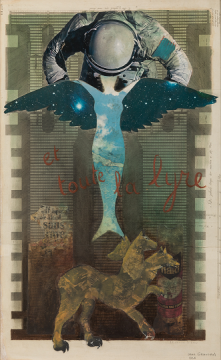Material / technique:
Mixed techniques and collage on paper
Dimensions:
80 x 49 cm
Type of acquisition:
Acquired by the Pierre-François Tilmon Fund
Year of acquisition:
2020
Depository institution:
Delta, Namur
